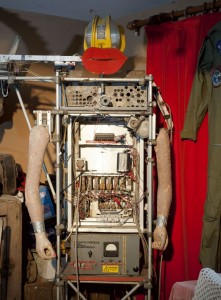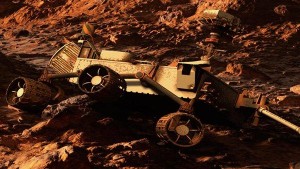
Bruce Lacey created the robot Rosa Bosom, exhibited to great acclaim in Cybernetic Serendipity, along with a myriad of other robots, interactive and early computer artworks at the ICA in 1969 and I do hope that she will feature in this show at the Camden Arts Centre, opening this week (7 July – 16 September 2012). Rosa, who runs on lawnmover parts, later went on to win the ‘Alternative Miss World’ in 1985. You can see Rosa in action (and Lacey interviewed) in the beautifully presented BBC documentary about Andrew Logan and his outrageously wacky Alternative Miss World called The British Guide to Showing Off, 2011 (the DVD was released earlier this year). If you haven’t yet seen this, then I suggest you rent it post-haste as it is a fabulous film (with collage-style graphics slightly reminiscent of Monty Python). Andrew Logan, in common with many artists who don’t fit into the standard ‘Contemporary Art’ mould, (as articulated by the dominate and inter-related network of dealer/gallery/auction houses) has tended to be underestimated by the art world, more’s the pity as his work is colourful, fun and popular. But, as Brian Eno and Grayson Perry point out in this documentary, these facts have probably worked against him. A resistance in the art world and arts education to anything that is accessible and enjoyable, means that such art tends to become translated as lightweight. This limiting thought pattern believes that Popular must equal lowest common denominator, as if nothing of quality can ever be made if a lot of people like it; it’s profoundly snobbish said Brian Eno. It occurs to me that this point could be applied in many cases to the pioneers of computer arts, too.
In the Camden show Bruce Lacey is hailed as one of Britain’s great visionary artists. And yet many people will not have heard of him. Let us hope that this hastens an art world sea-change of re-discovery and celebration of the huge and varied senior population of (non-Turner-Prize winning) artists in Britain.
Another DVD out soon The Lacey Rituals: Films by Bruce Lacey and Friends, of restored films by the BFI should also be worth seeing. Lacey also worked with Ken Russell, among others.

